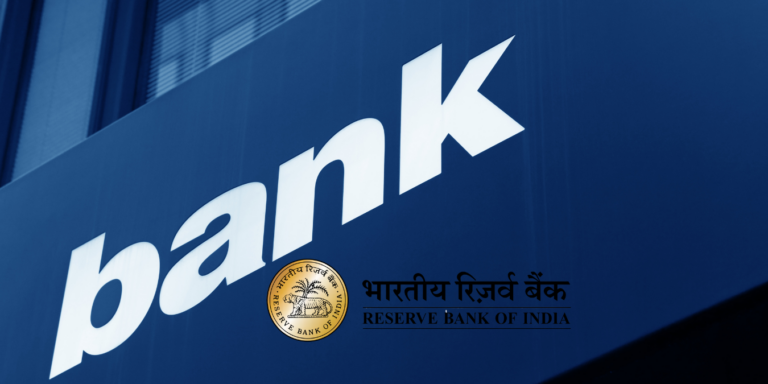
“Explore how RBI’s rate cut impacts FD investors, penalty charges for rebooking FDs, and strategies to secure higher interest income. Learn about alternative investments, financial planning, and economic implications in this detailed guide for safeguarding your returns in a low-interest environment. “
The Reserve Bank of India (RBI) has always played a pivotal role in shaping the country’s financial landscape. Its monetary policies, including interest rate adjustments, have far-reaching implications for various sectors of the economy. The recent rate cut by the Reserve Bank of India (RBI) has sparked significant concern among fixed deposit (FD) investors. With the repo rate reduced from 6.50% to 6.25%, the implications for FD investors are profound. This move, aimed at stimulating economic growth, has inadvertently created a challenging environment for those relying on FDs for steady income. Adding to the woes are the penalty charges imposed on account holders looking to rebook FDs to secure higher interest income. In this comprehensive blog post, we will delve into the intricacies of RBI’s rate cut, its impact on FD investors, and the implications of penalty charges for those seeking to rebook FDs.
Understanding the RBI Rate Cut
The RBI’s decision to cut the repo rate is aimed at stimulating economic growth by making borrowing cheaper for businesses and consumers. However, this move also leads to a reduction in interest rates offered on fixed deposits, which can be a cause for concern for FD investors who rely on these investments for steady income.
Impact on Fixed Deposit Investors
- Lower Interest Rates: The immediate effect of the rate cut is a reduction in the interest rates offered on new FDs. This means that investors looking to reinvest their matured FDs or open new ones will receive lower returns compared to previous rates.
- Premature Withdrawal Penalties: Many investors might consider breaking their existing FDs to rebook at higher rates before banks adjust their rates downward. However, this comes with penalty charges that can range from 0.5% to 1% of the interest rate. Different banks have varying penalty structures, and it’s crucial for investors to understand these before making any decisions.
The Ripple Effect on Fixed Deposit Investors
Fixed Deposits have long been a preferred investment option for risk-averse individuals seeking stable returns. However, the recent rate cut has significantly impacted the interest income from FDs, leading to widespread concern among investors.
Key Concerns:
- Reduced Interest Rates: Banks have slashed FD interest rates in response to the RBI’s rate cut, leading to lower returns for investors.
- Inflation Concerns: With reduced interest rates, the real returns (adjusted for inflation) on FDs have diminished, eroding the purchasing power of investors.
- Impact on Retirees: Retirees and senior citizens, who often rely on FD interest for their daily expenses, are particularly affected by this decline in income.
Penalty Charges for Rebooking FDs
Different banks impose different penalty charges for premature withdrawal of FDs. Here’s a look at the penalty charges of some major banks:
| Bank | Penalty for Premature Withdrawal |
| State Bank of India (SBI) | For term deposits up to Rs 5 lakh, the penalty is 0.50% for all tenures. For deposits above Rs 5 lakh, the penalty is 1% for all tenures. The interest rate applicable will be 0.50% or 1% below the rate applicable at the time of deposit for the period the deposit remained with the bank or 0.50% or 1% below the contracted rate, whichever is lower. |
| HDFC Bank | The penalty for premature withdrawal is 1% less than the applicable rate on the date of deposit booked for the period the deposit remained with the bank, not the contracted rate. |
| ICICI Bank | The penalty for premature withdrawal is 1% on the applicable rate. |
| Punjab National Bank (PNB) | The penalty is 1% on the applicable rate. The interest rate payable would be the contractual rate minus 1% or the rate under the scheme on the contractual date applicable for the tenor for which the deposit has actually run minus 1%, whichever is lower. |
| Canara Bank | The penalty for premature withdrawal is 1% on the applicable rate. |
| Bank of India | The penalty for premature withdrawal is 1% on the applicable rate. |
| YES Bank | The penalty for premature withdrawal is 1% on the applicable rate. |
Key Considerations for FD Investors
- Understand the Penalty Structure: Each bank has its own penalty structure for premature withdrawal of FDs. It’s crucial to understand these penalties as they can significantly impact your returns.
- Evaluate the Benefits: Before deciding to break an existing FD, compare the penalty charges with the potential benefits of rebooking at a higher rate. Sometimes, the penalties may outweigh the benefits.
- Consider Alternatives: If the penalties are too high, consider other investment options that might offer better returns without the need for premature withdrawal.
- Consult with Your Bank: Always consult with your bank to get the most accurate and updated information regarding penalty charges and interest rates.
Strategies for FD Investors
- Lock in Higher Rates: If you have the opportunity, lock in higher interest rates before banks adjust their rates downward. This can help you secure better returns for the duration of the FD.
- Consider Short-Term FDs: In a declining interest rate environment, short-term FDs can be a better option as they allow you to reinvest at potentially higher rates once the rates stabilize.
- Diversify Investments: Diversifying your investments across different financial instruments can help mitigate the impact of lower FD rates. Consider options like mutual funds, bonds, and other fixed-income securities.
- Evaluate Penalty Charges: Before deciding to break an existing FD, carefully evaluate the penalty charges and compare them with the potential benefits of rebooking at a higher rate.
Strategies for FD Investors in a Low-Interest Environment
Given the current scenario, FD investors need to adopt a strategic approach to maximize their returns while minimizing the impact of penalty charges. Here are some actionable strategies:
1. Laddering FDs:
- Concept: Invest in multiple FDs with varying tenures to spread out the risk and take advantage of different interest rates.
- Benefit: Provides liquidity and flexibility, allowing investors to reinvest at higher rates as and when they become available.
2. Exploring Alternative Investment Options:
- Debt Mutual Funds: These funds invest in fixed-income securities and can offer higher returns compared to FDs, especially in a falling interest rate environment.
- Senior Citizen Savings Scheme (SCSS): Offers higher interest rates specifically for senior citizens, providing a viable alternative to FDs.
- Post Office Schemes: Various post office schemes offer competitive interest rates and tax benefits, making them an attractive option for risk-averse investors.
3. Negotiating with Banks:
- Higher Interest Rates: Some banks may offer higher interest rates for bulk deposits or for loyal customers. It’s worth negotiating with your bank to secure a better rate.
- Waiver of Penalty Charges: In certain cases, banks may waive or reduce penalty charges for premature withdrawal, especially for long-standing customers.
4. Diversifying Investment Portfolio:
- Equity Investments: While riskier, equity investments can offer higher returns over the long term, helping to offset the impact of low FD interest rates.
- Real Estate: Investing in real estate can provide steady rental income and potential capital appreciation, diversifying the income sources.
The Role of Financial Planning in Navigating Rate Cuts
In a volatile financial environment, sound financial planning becomes crucial for safeguarding one’s investments and ensuring financial stability. Here are some key considerations for FD investors:
1. Assessing Financial Goals:
- Short-term vs. Long-term Goals: Align your investment strategy with your financial goals. For short-term goals, prioritize liquidity and safety, while for long-term goals, consider higher-yielding investments.
- Risk Appetite: Evaluate your risk tolerance and choose investment options accordingly. While FDs are low-risk, exploring other avenues may require a higher risk appetite.
2. Regular Portfolio Review:
- Monitoring Interest Rates: Keep a close eye on interest rate trends and adjust your investment strategy as needed.
- Rebalancing Portfolio: Periodically review and rebalance your investment portfolio to ensure it aligns with your financial goals and market conditions.
3. Seeking Professional Advice:
- Financial Advisors: Consult with financial advisors to gain insights into the best investment options tailored to your specific needs and goals.
- Tax Planning: Consider the tax implications of your investments and explore tax-saving instruments to maximize your returns.
The Broader Economic Implications of RBI’s Rate Cut
While the immediate impact of RBI’s rate cut is felt by FD investors, it’s essential to understand the broader economic implications of this policy decision.
1. Stimulating Economic Growth:
- Lower Borrowing Costs: Reduced interest rates make borrowing cheaper for businesses and consumers, encouraging investment and spending.
- Boost to Real Estate and Automobile Sectors: Lower lending rates can lead to increased demand in sectors like real estate and automobiles, driving economic growth.
2. Inflation Control:
- Moderating Inflation: Lower interest rates can help in controlling inflation by making borrowing more accessible, thereby increasing the money supply in the economy.
- Balancing Act: The RBI needs to strike a balance between stimulating growth and controlling inflation, ensuring long-term economic stability.
3. Impact on Savings and Investments:
- Shift in Investment Patterns: With reduced returns on traditional savings instruments like FDs, investors may shift towards higher-yielding assets, impacting the overall investment landscape.
- Encouraging Equity Investments: Lower interest rates may drive more investors towards equity markets, potentially leading to increased market volatility.
Navigating the Challenges Ahead
The RBI’s decision to cut interest rates, while aimed at bolstering economic growth, has undoubtedly created challenges for FD investors. The reduction in interest income, coupled with penalty charges for rebooking FDs, has left many investors searching for alternative strategies to safeguard their returns.
However, with careful planning and a strategic approach, investors can navigate these challenges effectively. By exploring alternative investment options, diversifying their portfolios, and seeking professional advice, FD investors can mitigate the impact of rate cuts and continue to achieve their financial goals.
As the economic landscape continues to evolve, staying informed and adaptable will be key to making sound financial decisions. Whether you’re a retiree relying on FD interest or a young investor looking to grow your wealth, understanding the implications of RBI’s policies and adjusting your investment strategy accordingly will be crucial in securing your financial future.
-
SBI, HDFC & 5 Other Prominent Indian Banks Cut FD Rates After RBI Repo Cuts
RBI’s repo slash triggered 7 top banks to gut FD rates—SBI, HDFC, ICICI slash yields overnight. But retirees
-
HDFC Bank’s Lounge Access Shock: Why Your Debit Card Perk Just Got 2X Tougher
HDFC just DOUBLED lounge access spends to Rs 10k—shocking millions! But wait: a SECRET Infiniti loophole unlocks 16
-
High-Value Credit Card Payments: The Silent Trigger for Section 148 Notices
Your coffee swipe is secretly arming tax sleuths with a ₹1.12 crore raid blueprint—but how? Uncover 2025’s hidden





























